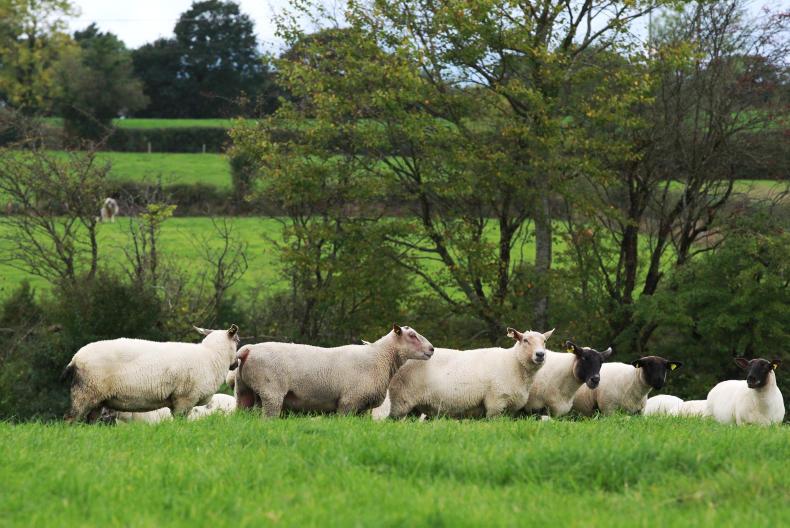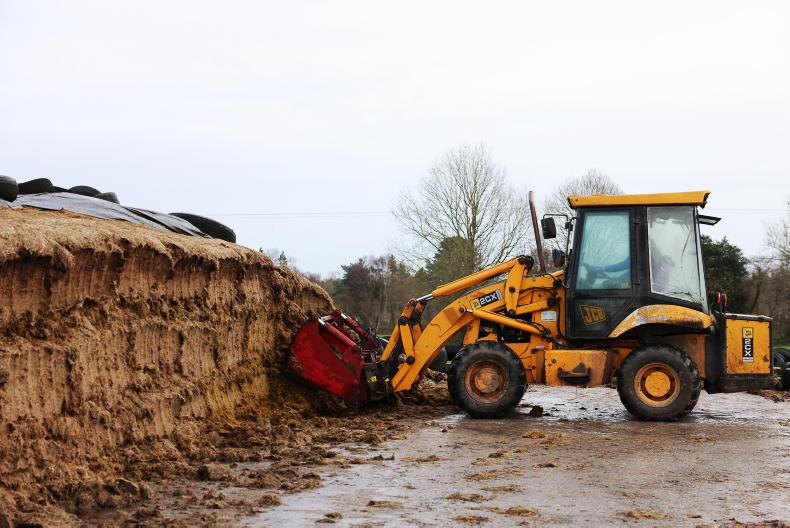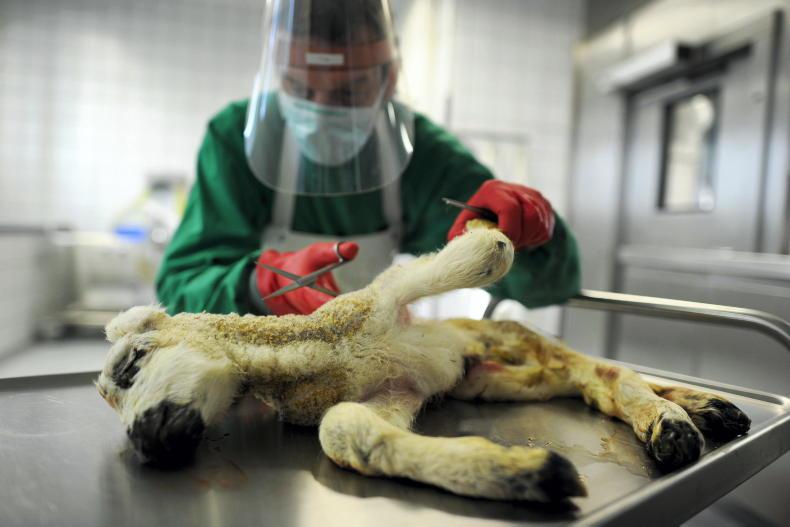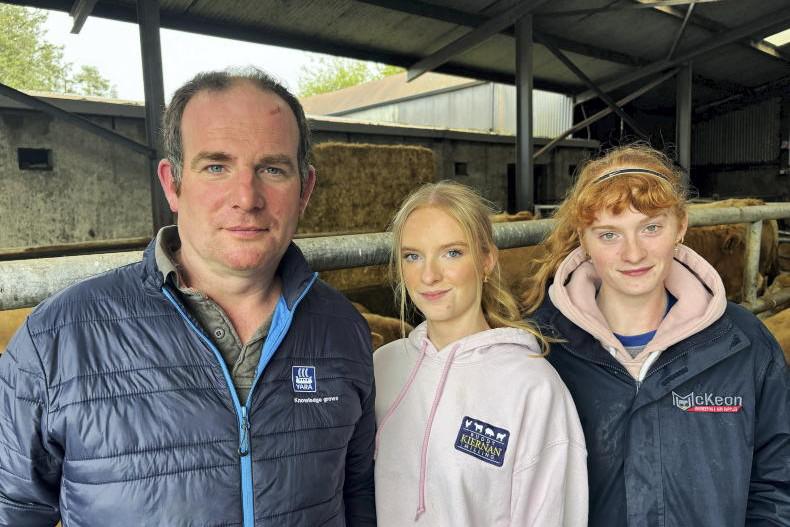Last week’s article discussing breeding dates and anticipated market performance in 2020 has generated some follow-on queries. A number of farmers exploring an earlier lambing date are investigating ways to pull the lambing date forward without adding excessive labour to the system. Some are looking at split lambing dates and, as such, there is a strong desire to keep the lambing spread of ewes lambing earlier as compact as possible.
Last week’s discussions also touched on reports of variable performance reported with synchronising ewes.
Tim Keady, Teagasc principal research officer, has extensive experience in Mellows Campus Athenry in early lambing systems utilising synchronisation programmes (sponging of ewes) and, more recently, in research utilising the ram effect to advance cycling in ewe lambs and compact the length of the mating and lambing period.
Sponging ewes
Sponging of ewes is the most reliable method where breeding well out of season and is the main option used by pedigree breeders targeting a lambing date of late December to early January or carrying out artificial breeding.
Tim says that in order to achieve optimum results with the sponging of ewes, there are a number of factors that must be satisfied. Ewes must be in prime condition for breeding including being weaned for a sufficient period of time pre-sponging (ideally more than four to six weeks) and being in general good health and expressing body condition score of greater than 3.
The general recommendation is a ewe-to-ram ratio of 8:1
The condition and availability of rams is also a vital aspect. The general recommendation is a ewe-to-ram ratio of 8:1 but where there is any doubt that rams are not in prime condition for breeding this will need to be reduced.
Options such as splitting the date of insertion and removal of sponges or staggering sponge removal can help to spread the workload for rams. Tim says this approach of joining new ewes with a ram will also help ram libido and increase the number of ewes mated. Having access to replacement or substitute rams is also a good fall-back position.
Ram effect
The ram effect can be successfully used to induce ewes or ewe lambs to start cycling provided that they are sufficiently close to the time period of the onset of normal cyclicity.
Tim says that the ram effect can generally be used to pull cyclicity forward by three weeks, and possibly four weeks, depending on the time of year. For example, where a flock is usually joined to rams at the start of October there is potential to bring mating forward to early September while a big added benefit is that the ram effect will also compact the mating and lambing periods.
Rams can be aproned to prevent serving ewes, vasectomised or run alongside ewes in a paddock where good fencing that allows this to take place is present
It is vital for the ram effect to work that ewes have not had either sight or smell of rams for the previous month. When these ewes are exposed to rams (again, either sight or smell) natural pheromones trigger hormonal changes in the ewe that initiate cyclicity.
Rams can be aproned to prevent serving ewes, vasectomised or run alongside ewes in a paddock where good fencing that allows this to take place is present. Alternatively, fertile rams can be joined early in the season. There is a chance of rams serving ewes but the portion mated will generally be small.
After introducing rams, most ewes that are not already cycling will experience a silent heat within a 36-hour period while a proportion will experience a second silent heat six days post introduction. The silent heats are not detected by rams and rams should be removed 24 to 36 hours after being first introduced.
The peak timeframes for the number of ewes showing heat are day 18 post ram introduction and day 23
Ewes will typically start to cycle 17 days after the final silent heat but it is recommended to introduce fertile rams 14 days after the rams were first introduced to pick up any short cycles or individual ewes which were already cycling at the time of ram introduction. The peak timeframes for the number of ewes showing heat are day 18 post ram introduction and day 23. The timeline is summarised in Table 1.
Ewe-to-ram ratio
Similar to sponging, it is essential to have an adequate number of rams that are fit to serve ewes in a tighter period. The general recommendation is one ram to 18 or 20 ewes and, again, where there is any doubt about the ability of particular rams there should be a backup in place. It is also important to reduce the risk of infertility or subfertility.
The optimum security protocol is running a number of rams in a group so that where one ram is not working their work should be picked up by the others. You still need to be careful if running two rams together as a dominant ram which may have fertility issues can impede others from working.
Mature rams should be ideally mated with ewe lambs as these sheep are poor at seeking out heat
Where operating single-sire mating, it is advised to switch rams between mating groups while irrespective of how ewes are joined with rams, raddling rams is a vital aid in quickly identifying a high number of repeat matings and also accurately predicting lambing dates. Mature rams should be ideally mated with ewe lambs as these sheep are poor at seeking out heat. For this reason, it is also advisable to run ewes and ewe lambs as separate mating flocks.
Lambing facilities and ewe lambs
It should be noted when going down the route of synchronising ewes that there will be greater demand on facilities and labour where higher numbers are lambing in a tighter period. The ram effect can be successfully used to synchronise breeding in ewe lambs,with research in Athenry showing the potential to lamb 75% of ewe lambs joined within a two-week period and 90% within a three-week period. Such a scenario will greatly increase the demand on facilities. Therefore, it is advisable to breed ewe lambs after the first cycle of ewes so that there is less pressure on labour and facilities.
As a rule of thumb, ewe lambs should weigh 60% of mature weight at joining
It is also important to note that liveweight has a major influence on the age of puberty in ewe lambs and also affects potential litter size. As a rule of thumb, ewe lambs should weigh 60% of mature weight at joining. This is particularly important early in the season with ewe lambs reaching puberty at lighter weights later in the season.
For sponging of ewes to work optimally, ewes and rams must be in adequate condition.The ram effect can advance cyclicity in ewes and ewe lambs and compact the mating and lambing period. A lower ewe-to-ram ratio must be practised with synchronised breeding.It is important to take account of the influence compact lambing may have on facilities and labour required.
Last week’s article discussing breeding dates and anticipated market performance in 2020 has generated some follow-on queries. A number of farmers exploring an earlier lambing date are investigating ways to pull the lambing date forward without adding excessive labour to the system. Some are looking at split lambing dates and, as such, there is a strong desire to keep the lambing spread of ewes lambing earlier as compact as possible.
Last week’s discussions also touched on reports of variable performance reported with synchronising ewes.
Tim Keady, Teagasc principal research officer, has extensive experience in Mellows Campus Athenry in early lambing systems utilising synchronisation programmes (sponging of ewes) and, more recently, in research utilising the ram effect to advance cycling in ewe lambs and compact the length of the mating and lambing period.
Sponging ewes
Sponging of ewes is the most reliable method where breeding well out of season and is the main option used by pedigree breeders targeting a lambing date of late December to early January or carrying out artificial breeding.
Tim says that in order to achieve optimum results with the sponging of ewes, there are a number of factors that must be satisfied. Ewes must be in prime condition for breeding including being weaned for a sufficient period of time pre-sponging (ideally more than four to six weeks) and being in general good health and expressing body condition score of greater than 3.
The general recommendation is a ewe-to-ram ratio of 8:1
The condition and availability of rams is also a vital aspect. The general recommendation is a ewe-to-ram ratio of 8:1 but where there is any doubt that rams are not in prime condition for breeding this will need to be reduced.
Options such as splitting the date of insertion and removal of sponges or staggering sponge removal can help to spread the workload for rams. Tim says this approach of joining new ewes with a ram will also help ram libido and increase the number of ewes mated. Having access to replacement or substitute rams is also a good fall-back position.
Ram effect
The ram effect can be successfully used to induce ewes or ewe lambs to start cycling provided that they are sufficiently close to the time period of the onset of normal cyclicity.
Tim says that the ram effect can generally be used to pull cyclicity forward by three weeks, and possibly four weeks, depending on the time of year. For example, where a flock is usually joined to rams at the start of October there is potential to bring mating forward to early September while a big added benefit is that the ram effect will also compact the mating and lambing periods.
Rams can be aproned to prevent serving ewes, vasectomised or run alongside ewes in a paddock where good fencing that allows this to take place is present
It is vital for the ram effect to work that ewes have not had either sight or smell of rams for the previous month. When these ewes are exposed to rams (again, either sight or smell) natural pheromones trigger hormonal changes in the ewe that initiate cyclicity.
Rams can be aproned to prevent serving ewes, vasectomised or run alongside ewes in a paddock where good fencing that allows this to take place is present. Alternatively, fertile rams can be joined early in the season. There is a chance of rams serving ewes but the portion mated will generally be small.
After introducing rams, most ewes that are not already cycling will experience a silent heat within a 36-hour period while a proportion will experience a second silent heat six days post introduction. The silent heats are not detected by rams and rams should be removed 24 to 36 hours after being first introduced.
The peak timeframes for the number of ewes showing heat are day 18 post ram introduction and day 23
Ewes will typically start to cycle 17 days after the final silent heat but it is recommended to introduce fertile rams 14 days after the rams were first introduced to pick up any short cycles or individual ewes which were already cycling at the time of ram introduction. The peak timeframes for the number of ewes showing heat are day 18 post ram introduction and day 23. The timeline is summarised in Table 1.
Ewe-to-ram ratio
Similar to sponging, it is essential to have an adequate number of rams that are fit to serve ewes in a tighter period. The general recommendation is one ram to 18 or 20 ewes and, again, where there is any doubt about the ability of particular rams there should be a backup in place. It is also important to reduce the risk of infertility or subfertility.
The optimum security protocol is running a number of rams in a group so that where one ram is not working their work should be picked up by the others. You still need to be careful if running two rams together as a dominant ram which may have fertility issues can impede others from working.
Mature rams should be ideally mated with ewe lambs as these sheep are poor at seeking out heat
Where operating single-sire mating, it is advised to switch rams between mating groups while irrespective of how ewes are joined with rams, raddling rams is a vital aid in quickly identifying a high number of repeat matings and also accurately predicting lambing dates. Mature rams should be ideally mated with ewe lambs as these sheep are poor at seeking out heat. For this reason, it is also advisable to run ewes and ewe lambs as separate mating flocks.
Lambing facilities and ewe lambs
It should be noted when going down the route of synchronising ewes that there will be greater demand on facilities and labour where higher numbers are lambing in a tighter period. The ram effect can be successfully used to synchronise breeding in ewe lambs,with research in Athenry showing the potential to lamb 75% of ewe lambs joined within a two-week period and 90% within a three-week period. Such a scenario will greatly increase the demand on facilities. Therefore, it is advisable to breed ewe lambs after the first cycle of ewes so that there is less pressure on labour and facilities.
As a rule of thumb, ewe lambs should weigh 60% of mature weight at joining
It is also important to note that liveweight has a major influence on the age of puberty in ewe lambs and also affects potential litter size. As a rule of thumb, ewe lambs should weigh 60% of mature weight at joining. This is particularly important early in the season with ewe lambs reaching puberty at lighter weights later in the season.
For sponging of ewes to work optimally, ewes and rams must be in adequate condition.The ram effect can advance cyclicity in ewes and ewe lambs and compact the mating and lambing period. A lower ewe-to-ram ratio must be practised with synchronised breeding.It is important to take account of the influence compact lambing may have on facilities and labour required. 









SHARING OPTIONS